Galba Emperor
Servius Sulpicius Galba, Nero's successor, was the first emperor who took power with the support of the Legions; after him the successions in power were transformed into conquests of power by charismatic or opportunist generals who were in command of the most expert legions or who enjoyed the confidence of the praetorians. When he had been at the head of the army he was respected and appreciated for his conduct by vir militaris but, once he became emperor, he showed that he did not have the capacity to be a politician and indeed there could be a certain protraction in the behaviors and in unrecognizing decisions towards whom he had claimed it.
Galba was born in Terracina on December 24 of 3 BC, under the principality of Augustus, his father Gaius Sulpicius Galba had been consul suffetto in 5 BC; he was heir to Gaius Sulpicius Galba, the dictator who, in 358 BC , had earned a triumph for having vanquished the Gauls, and to Servius Sulpicius Galba, consul of 144 BC together the uncle of Julius Caesar, Lucius Aurelius Cotta.
The ancestor was a great orator, while the father of the future emperor was considered a mediocre lawyer who married Mummia Achaicam, great-granddaugther of Lucius Mummius who had ricevuito the praenom of Achaicus for defeating the Achaean League. His mother died young and his father remarried with Livia Ocellina who was a very rich woman and who was a loving stepmother for Servius who also adopted his name making himself calling Livio Ocellino for a while.
He lived his youth in the Rome of Augustus, almost certainly in the beautiful Domus that the gens Sulpicia owned on the Aventine. The Sulpicii were very rich and beyond the lands they had in the southern Latium - where there was also the villa in which Servio was born - they owned land in Rome that from the Aventine reached the Navalia along the bank of the Tiber. Here already from the II sec. B.C. they had built the Horrea Sulpicia, later known as Horrea Galbana, which were racks behind the Porticus Aemilia. The Sulpicia gens carried the fresh products of its agricultural estates sailing along the coast - in order to avoid the meager Pontine marshes - up to Rome where it opportunely built warehouses for foodstuffs.
In the years of education he showed a ready and acute mind so much that both Augustus and Tiberius foresaw great successes for him. He was able to achieve the protection of Livia, a relative of his stepmother, who left him heir to the handsome sum of five million of sestertius but Tiberius forgot to hand him.
His cursus Honorum was quick: from Praetor in 20 A.D. a consul in 33 AD. Among the commands of the various provinces entrusted to him, the most important was that one of Upper Germany where he subjected the Catti in 41. In Germany he had been sent by Caligula to re-establish the discipline after the revolt of Lentulus Gaetulius who had earned the benevolence of the legions by slowing down military activity and training. After the arrival of Galba, who re-established discipline, spread the mottoDisce miles militare. Galba est, non Gaetulicus
Learn, oh soldier, to militate. Now there is Galba, not Gaetulicus,
He was married to Emilia Lepida, the niece of the triumvir, who had given him two daughters but they died as children still and too Lepida died soon, certainly after 41 AD. Galba did not remarry any more and also knew how resist to Agrippina Minore who, after having been widowed by Gnaeus Domitius, fell in love with him.
After being from 45 to 47 proconsul of Africa, for a long time he remained far from Rome taking care of his properties that were located between Fondi and Terracina and living as Suetonius tells:in villa colli superposita, prope Terracinam, sinistrorsum Fundos petentibus,
In 61 Galba was recalled by Nero who appointed him governor of Hispania Tarraconensis. Here, after an initial period in which he administered too severely, he became efficient and avoided making gestures or taking initiatives that could have favored the onset of envy of the court and the emperor.
He was still in Hispania when, in the early months of 68, the legions of Gaul Lugdunense rose up under the guidance of Julius Vindex, a romanized gaul who had the office of proprector; at the same time Galba was informed that malicious "palace" rumors had instigated Nero to take drastic measures against him and probably the death sentence. Galba thought to support the revolt of Vindex and began to reinforce his legions, the VII Gemina, but failed to arrive in time to prevent the governor of Germania Superior, Lucius Virginius Rufus vanquishing the rebels ...
Sign up and read the rest of the article!
by M.L. ©ALL RIGHTS RESERVED (Ed 1.0 - 15/09/2023)
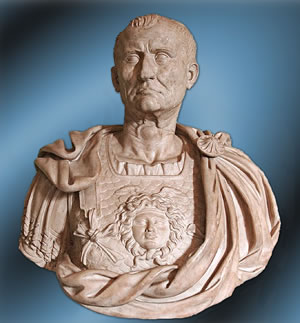
Emperor Galba - Bust in marble I sec. A.D. - Museum of Conservatories, Rome IT
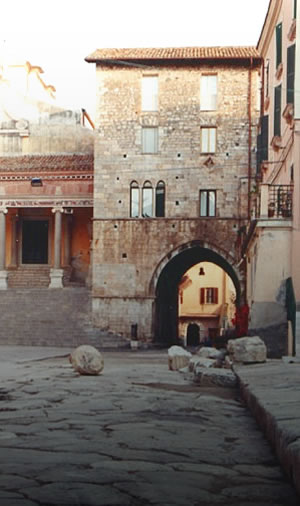
Arch of Galba I century AD - Terracina IT)
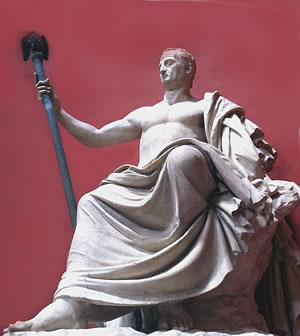
Servius Sulpicius Galba - Marble statue - Pio-Clementino Museum, Vatican Museums SCV
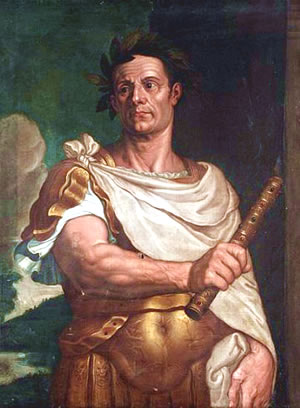
Tiziano Vecellio, Portrait of Galba
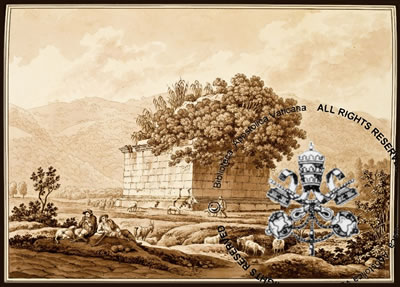
View of the so-called Mausoleum of Galba, printing - Apostolic Vatican Library






